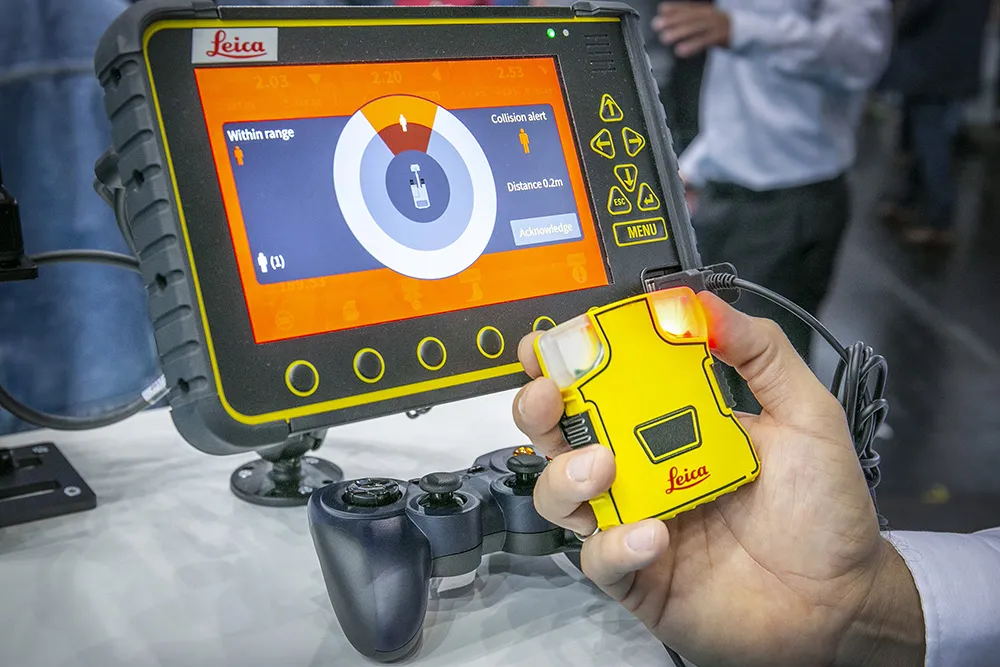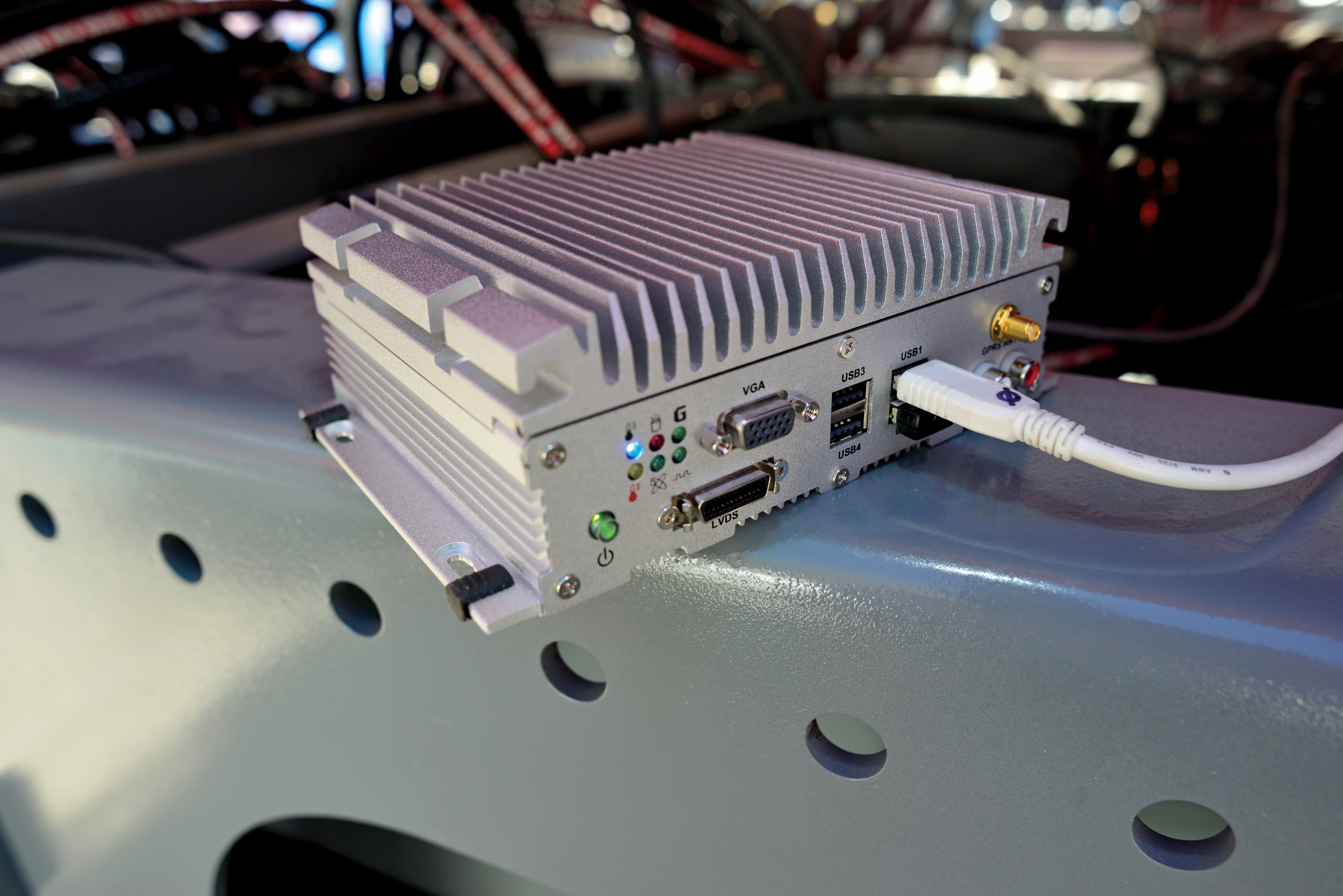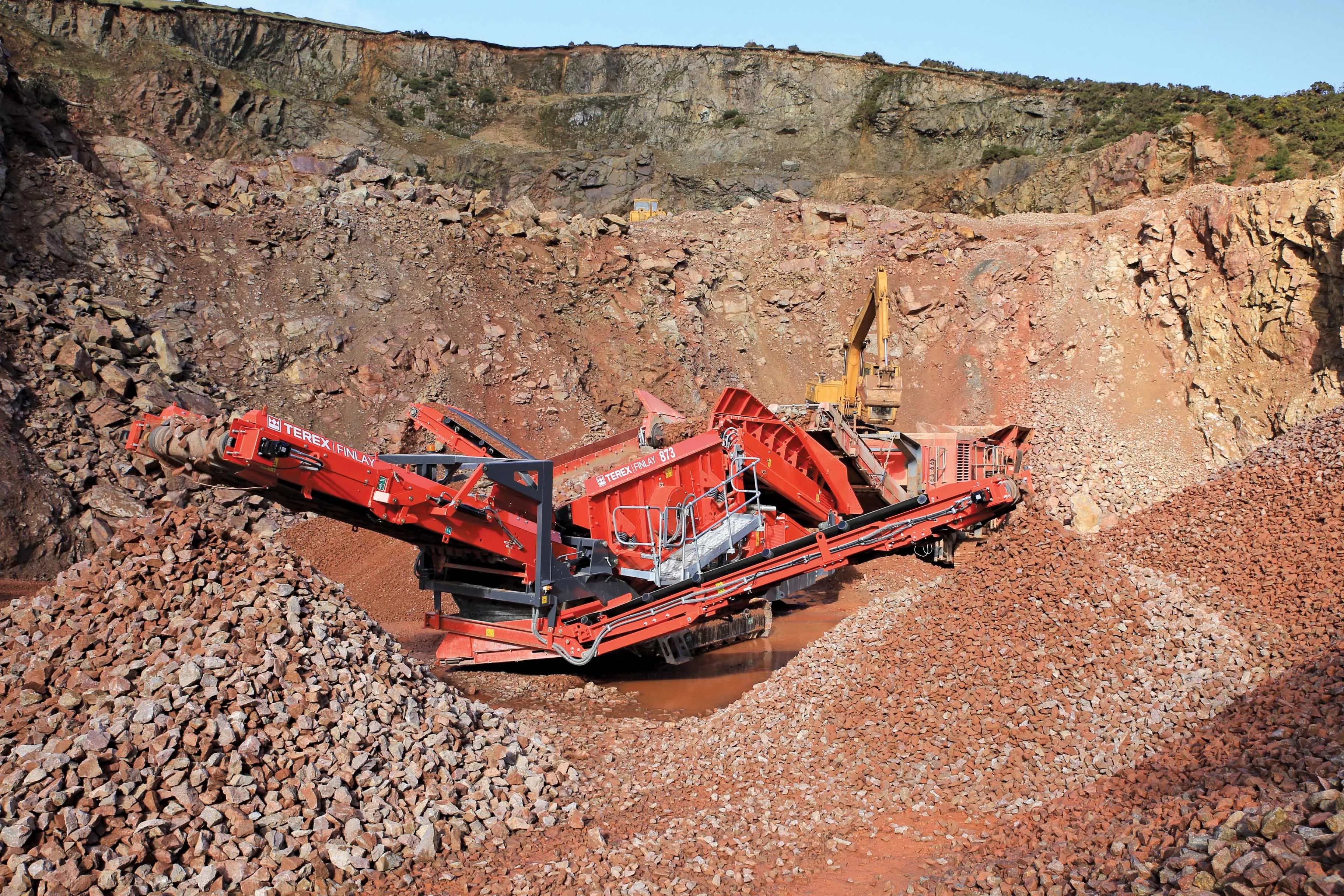
The system offers a range of up to 50m and within this, can be configured by the user with close, near and far alerts to suit the type of operation. This data is recoded in the cloud and Brad Mullins from the firm added, “You can see on a toolbox where there are conflicts.”
Application engineer Michele Costa said that event logging onsite is sent to the cloud and can be checked on a site map. This shows heat zones of conflicts, identifying machines or personnel and highlighting if there are issues to be resolved such as machines working too close together or obscured sightlines that prevent personnel or machine operators from seeing each other onsite for example. Similarly, for blasting operations on quarries, machines or personnel close to a planned blast can be warned in advance to ensure safety.









